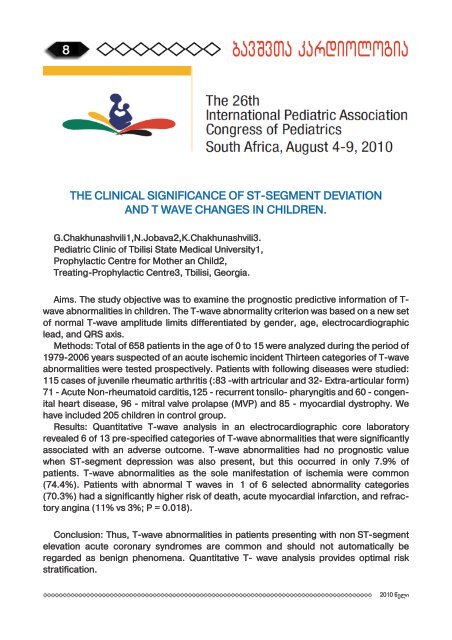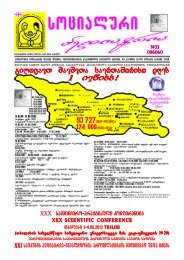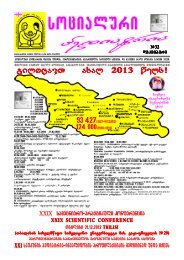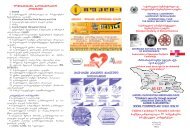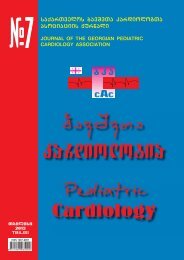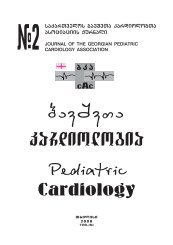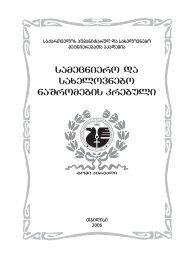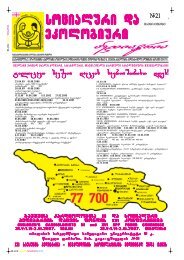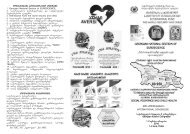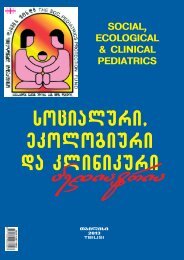You also want an ePaper? Increase the reach of your titles
YUMPU automatically turns print PDFs into web optimized ePapers that Google loves.
8 ,fdidsf rfhlbjkjubf<br />
THE CLINICAL SIGNIFICANCE OF ST-SEGMENT DEVIATION<br />
AND T WAVE CHANGES IN CHILDREN.<br />
G.Chakhunashvili1,N.Jobava2,K.Chakhunashvili3.<br />
Pediatric Clinic of <strong>Tbilisi</strong> State Medical University1,<br />
Prophylactic Centre for Mother an Child2,<br />
Treating-Prophylactic Centre3, <strong>Tbilisi</strong>, Georgia.<br />
Aims. The study objective was to examine the prognostic predictive <strong>info</strong>rmation of Twave<br />
abnormalities in children. The T-wave abnormality criterion was based on a new set<br />
of normal T-wave amplitude limits differentiated by gender, age, electrocardiographic<br />
lead, and QRS axis.<br />
Methods: Total of 658 patients in the age of 0 to 15 were analyzed during the period of<br />
1979-2006 years suspected of an acute ischemic incident Thirteen categories of T-wave<br />
abnormalities were tested prospectively. Patients with following diseases were studied:<br />
115 cases of juvenile rheumatic arthritis (:83 -with artricular and 32- Extra-articular form)<br />
71 - Acute Non-rheumatoid carditis,125 - recurrent tonsilo- pharyngitis and 60 - congenital<br />
heart disease, 96 - mitral valve prolapse (MVP) and 85 - myocardial dystrophy. We<br />
have included 205 children in control group.<br />
Results: Quantitative T-wave analysis in an electrocardiographic core laboratory<br />
revealed 6 of 13 pre-specified categories of T-wave abnormalities that were significantly<br />
associated with an adverse outcome. T-wave abnormalities had no prognostic value<br />
when ST-segment depression was also present, but this occurred in only 7.9% of<br />
patients. T-wave abnormalities as the sole manifestation of ischemia were common<br />
(74.4%). Patients with abnormal T waves in 1 of 6 selected abnormality categories<br />
(70.3%) had a significantly higher risk of death, acute myocardial infarction, and refractory<br />
angina (11% vs 3%; P = 0.018).<br />
Conclusion: Thus, T-wave abnormalities in patients presenting with nonST-segment<br />
elevation acute coronary syndromes are common and should not automatically be<br />
regarded as benign phenomena. Quantitative T- wave analysis provides optimal risk<br />
stratification.<br />
<strong>2010</strong> weli


